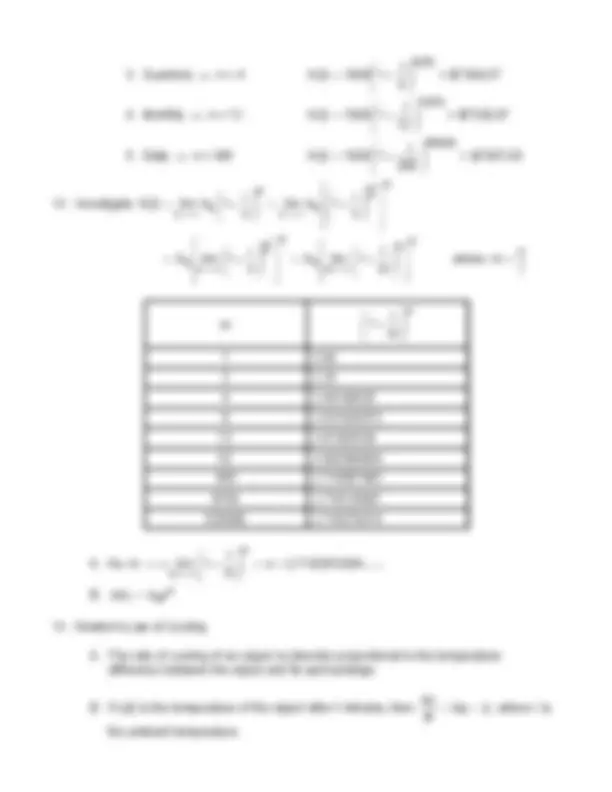



Study with the several resources on Docsity

Earn points by helping other students or get them with a premium plan


Prepare for your exams
Study with the several resources on Docsity

Earn points to download
Earn points by helping other students or get them with a premium plan
Community
Ask the community for help and clear up your study doubts
Discover the best universities in your country according to Docsity users
Free resources
Download our free guides on studying techniques, anxiety management strategies, and thesis advice from Docsity tutors
Material Type: Notes; Class: Calculus II; Subject: Mathematics; University: Pellissippi State Technical Community College; Term: Unknown 1989;
Typology: Study notes
1 / 3

This page cannot be seen from the preview
Don't miss anything!


7.5 Exponential Growth and Decay
Objective: Use differential equations to solve growth and decay problems
I. A population grows at a rate proportional to the size of the population
II. A substance decays at a rate proportional to the size of the mass
III. The value of a savings account at continuously compounded interest increases at a rate
proportional to that value
IV. Law of natural growth: k is a positive constant
dy ky dt
V. Law of natural decay: k is a negative constant
dy ky dt
VI. Solve the initial-value problem y(0) = y (^) 0
dy ky dt
A. dy = (ky)dt
dy kdt y
dy kdt y
C. ln |y| = kt + C ⇒ |y| =
kt C C kt e e e
=
D. where A is an arbitrary constant
kt y = Ae
c ( = ±e or 0)
kt y(t) =y e 0
VII. The relative growth rate k is constant
A. If then
dP kP, dt
1 dP k P dt
B. If and t is in years, then k =.
dP .02P, dt
.02t P(t) = P e 0
VIII. Example 2 on p. 530
A. The initial-value problem is P(0) = 2520
dP kP, dt
B. The solution is c
kt P(t) = 2520e
C. Estimate k using 1960 data
10t P(10) = 2520e = 3020
k ln. 10 2520
D. Model for world population growth in second half of 20
th century =
.018t P(t) = 2520e
IX. Radioactive decay
A. If m(t) is the mass remaining from an initial mass m (^) 0 of the substance after time t
1 dm
m dt
dm km dt
kt m(t) =m e 0
X. Example 3
A. Half-life of radium-226 is 1590 yr; initial mass is 100 mg
kt
1590t 50 = 100e ⇒
ln k 1590
ln2 (^) t 1590 m(t) 100e
XI. Continuously compounded interest: $1000 at 10% for 20 yr
A. Simple interest: I = Prt and A(t) = A 0 (1 + rt)
B. Compound interest:
nt
0
r A(t) A 1 n
1(20) . A(t) 1000 1 1
2(20) . A(t) 1000 1 2